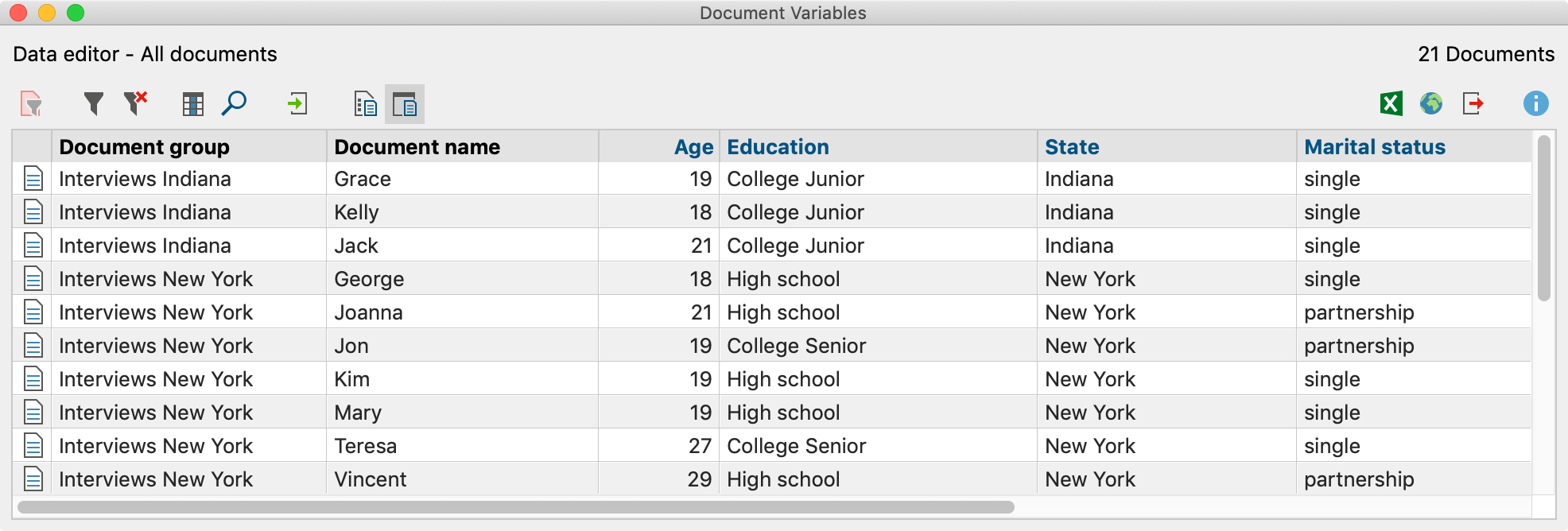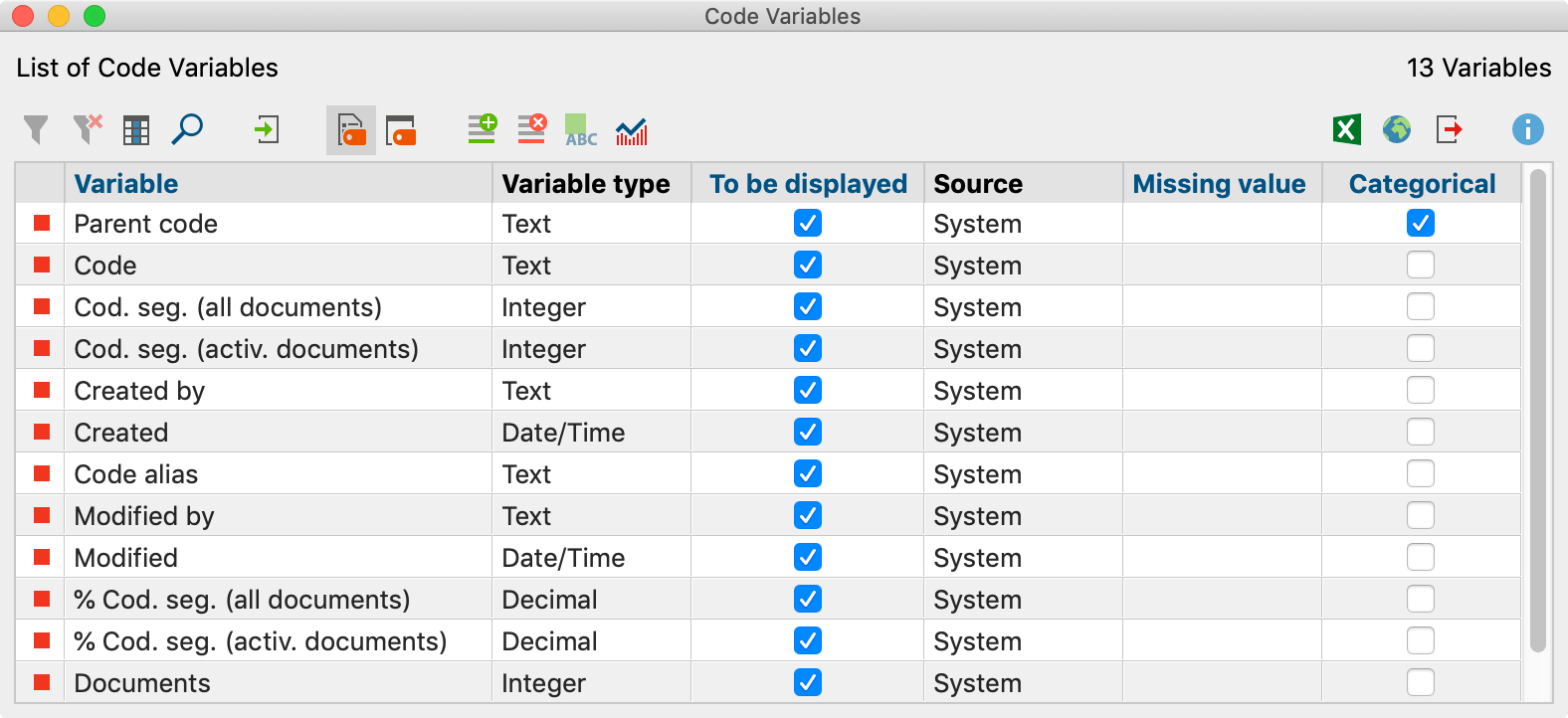In MAXQDA you can store information in variables both for documents and at code level. For the speakers of a group interview there are additional speaker variables which are explained in detail in the chapter analysis of focus groups.
Document variables
Document variables are associated with an entire document, (e.g. the person interviewed in an interview transcript). In these cases, you can assign socio-demographic information like gender, age, education level, etc. that can then be analyzed in conjunction with the actual text.
In the following example, the age and gender of all five respondents was noted, in addition to whether they were members of an NGO:

Code variables
The development of code variables in MAXQDA makes it possible for you to define variables within a document and to use their values as selection criteria during the evaluation process. In this way, you can, for example, activate codes by defined criteria.
Managing variables
Two views are available in MAXQDA for handling variables: the variable list and the data editor. In the variable list, all variables defined in the project are listed in tabular form. The data editor displays the data table as a rectangular matrix "rows times columns" in a similar way to statistics programs. The columns always contain the variables, the rows contain the documents for the document variables and the rows contain the codes for the code variables.
The List of Document Variables
The List of Document Variables can be opened via Variables > List of Document Variables.
When you open the List of Document Variables in a newly created project, the system variables displayed in the image are already defined:
- Document group – contains the name of the document group that a particular document is a part of
- Document name – contains the name of the document
- Created by – contains the name of the user who was logged in when the document was imported or created
- Created – contains the date the document was imported or created
- Modified by – contains the name of the user who last edited the document or added codings, memos, or links to it
- Modified – contains the date, when the document was last edited or codes, memos, or links were added to it
- Coded segments – contains the number of coded segments in the document
- Memos – contains the number of memos in the document

The system variables are indicated with a red symbol in the first column of the list of variables. System-defined variables cannot be modified or deleted. User-defined variables are indicated with a blue symbol in the first column - these variables can be modified or deleted as desired.
The List of Code Variables
The List of Code Variables can be opened via Variables > List of Code Variables.
When you open the List of Code Variables in a newly created project, the system variables displayed in the image are already defined:
- Parent code – Names of the codes at the following (higher) level (if applicable)
- Code – Code name\subcode name
- Coded segments (all documents) – Number of segments coded with this code
- Coded segments (activated documents) – Number of segments coded with this code in current activated documents (code needs to be activated)
- % Coded segments (all documents) – relative frequency of "Coded segments (all documents)"
- % Coded segments (activated documents) – relative frequency of "Coded segments (activated documents)"
- Created by – User who created the code
- Creation date – Date and time at which the code was created
- Modified by – User name of person who last edited or used the code
- Modified – Date of last editing or usage of the code
- Documents – Number of documents in which the code appears

Sorting the List of Variables
The list of variables can be sorted in alphabetical or reverse alphabetical order just like any other table in MAXQDA. Simply click once or twice on the column header you would like to sort by.
Toolbar
Both the List of Document Variables” and the List of Code Variables can be managed from the toolbar, which contains identical symbols for both lists.
![]() Import data – allows import of spreadsheets in XLS/X format.
Import data – allows import of spreadsheets in XLS/X format.
![]() List of document variables – switches from the Data view to the Variable view.
List of document variables – switches from the Data view to the Variable view.
![]() Data editor – switches from the Variable view to the Data view.
Data editor – switches from the Variable view to the Data view.
![]() New variable – creates a new variable.
New variable – creates a new variable.
![]() Delete selected items – deletes selected variables.
Delete selected items – deletes selected variables.
![]() Convert to boolean variable – converts selected variables into dichotomous boolean variables.
Convert to boolean variable – converts selected variables into dichotomous boolean variables.
![]() Convert to text variable – converts selected variables into text variables.
Convert to text variable – converts selected variables into text variables.
![]() Document / Code Variable Statistics – generates a frequency table or chart for the indicated variable.
Document / Code Variable Statistics – generates a frequency table or chart for the indicated variable.
